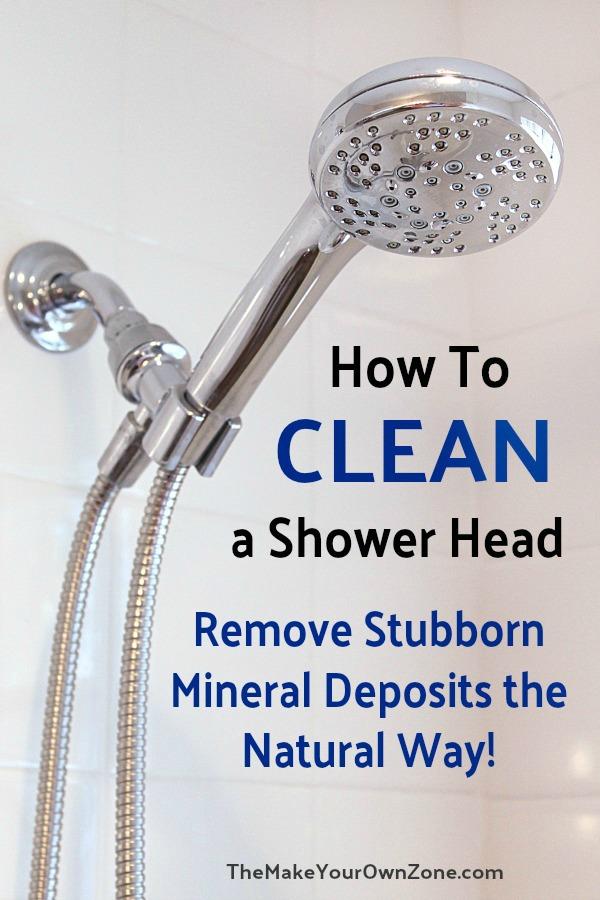How to Clean a Shower Head
To keep the water flowing forcefully from your shower head, you should clean it from time to time. Follow these quick, easy instructions for getting your shower head back in tip-top shape.
ByGlendaTaylor andBobVila | Updated Sep 28, 2021 11:40 AM
istockphoto.com
If you’re looking forward to a hot shower with an invigorating blast of water spray, you’ll understandably be disappointed if water trickles out or spurts sideways from your high-pressure shower head. When new, a shower head delivers a uniform spray of water that’s both vigorous and refreshing, but over time, the minerals found in water can begin to clog the tiny holes in the shower head, reducing the spray force and leaving you with a lackluster shower experience.
Is your shower head failing to perform as well as it once did? If so, then chances are good that it’s time to clean the shower head, eliminating scaly buildup within the fixture in order to restore the strength of its flow. Unclogging shower heads is easy to do, and you’ll be happy that you spent the small amount of time required to complete the task.
The Scrubbing Method
The simplest method for removing mild scale buildup from a shower head is to scrub it. This works well for shower heads that are slightly dirty or those that have hard water stains starting to form on the face where the water holes are located. Scrubbing is just like it sounds—it involves using a cleaner that helps dissolve deposits and a small scrubber with nylon bristles that can get at the tiny nooks and crannies on the face of the shower head.
istockphoto.com
Scrubbing a shower head is a relatively quick step in a deep bathroom cleaning routine, and you don’t need to do it daily or even weekly. If a shower head is scrubbed every month or so, it is unlikely to develop heavy deposit buildup in the first place. This method is suitable for cleaning stationary heads that attach to a shower arm as well as handheld shower heads. It does require removing the head itself, which is simple to do.
Advertisement
The scrubbing method is well suited for removing light soap scum and deposits, but if the shower head has heavy or thick hard water deposits, skip the scrubbing method and check out the soaking method below.
You should notice a big difference unless you have always had a problem with low water pressure in your home. While shower head cleaning will improve the water flow through the head, cleaning the shower head won’t magically overcome weak water pressure.
AdvertisementIf the shower head is badly clogged, scrubbing alone may not remove all the deposits. When that’s the case, soaking the shower head first can make a difference.
istockphoto.com
The Soaking Method
Soaking a shower head involves submerging it in an acidic solution—often, white vinegar is used, as it’s inexpensive and nontoxic. Vinegar, a natural cleaner, will dissolve the hard water stains and deposits that can collect on shower heads and in their spray nozzles. However, it can take a day or longer to dissolve the deposits with vinegar, so if you’re in a hurry, try using a cleaner specifically for removing hard water stains, such as Bring It On Hard Water Removing Cleaner (available from Amazon), to speed up the process.
The nice thing about using the soaking method to clean a shower head is that you can remove the shower head and submerge it in the vinegar or cleaner and then go about your other daily tasks as the liquid works to dissolve the deposits. Avoid using harsh cleaners that are not suitable for use on chrome, however. Some types of rust and lime deposit-removing cleaners (and toilet-bowl cleaners) will permanently mar chrome. So, check the product to see if it’s suitable for use on chrome before soaking the shower head.
istockphoto.com
Soaking can be used by itself or in conjunction with the previous scrubbing method. In addition, the soaking process can be used without removing the shower head from the shower arm, if desired. Soaking a head in place is best suited for removing only mild deposits. For heavier deposits, it’s best to remove the shower head, soak it, and then follow up using the scrubbing method.
AdvertisementTips for Maintaining a Clean Shower Head
It’s always easier to maintain a clean shower head than to disassemble it and do a deep-dive cleaning to remove deposits. The following tips will help you keep your newly cleaned shower head spraying efficiently.
istockphoto.com
FAQs About Shower Head Cleaning
Installing a water softener is an excellent idea if your home has naturally hard water. Not only will it help keep shower heads clear, but it will also prolong the useful life of your dishwasher and clothes washer. Plus, sinks, tubs, and showers will all need less cleaning.
Opt for a natural mold and mildew remover, such as Earthworm Mold Stain and Mildew Treatment.
AdvertisementYou can, but white vinegar is more potent than distilled vinegar, so you may have to let the shower head soak longer if you use distilled vinegar.
Disclosure: BobVila.com participates in the Amazon Services LLC Associates Program, an affiliate advertising program designed to provide a means for publishers to earn fees by linking to Amazon.com and affiliated sites.








